This week fellow Substacker Elle Griffin published “No one buys books,” which looks at quotes and stats from the DOJ vs. PRH (Penguin Random House) trial where the government successfully blocked PRH’s $2.2 billion purchase of Simon & Schuster. Griffin’s article has gone viral for its near apocalyptic portrait of publishing. Much of the overall thrust of Griffin’s article is right: Most people don’t buy many books, sales for most books are lower than many think, and big publishing works on a blockbuster model where a few couple hits—plus perennial backlist sellers—comprise the bulk of sales. But I hope Griffin wouldn’t mind my offering a rebuttal of a few points here. As I think a few things are off.
I was alerted to the article by people rebutting it by sharing my 2022 article about the hard-to-believe claim that 50% of books only sell 12 copies. This claim, and similar ones, go viral pretty regularly despite making no sense. In the comments of my 2022 post, Kristen McLean from BookScan attempted to recreate the viral statistic and couldn’t come close even by restricting sales to frontlist print sales in a calendar year. It seems unclear what the 12 copies claim is referencing at all.
While I think Griffin does great work collecting these quotes, I would offer a word of caution. PRH’s legal strategy was to present publishing as an imperiled, dying industry beset on all sides by threats like Amazon. PRH allegedly even paid high fees to have agents and other industry professionals testify on their behalf. I’m not saying any of the quotes are lies. I’m saying the quotes and statistics are fitting a specific narrative in the context of a legal battle.
First though, let’s step back and look at the biggest question. Do people buy books?
Americans Buy Over a Billion Books a Year
How many books are sold in the United States? The only tracker we have is BookScan, which logs point of sale—i.e., customer purchases at stores, websites, etc.—for most of the market. BookScan counted 767 million print sales in 2023. BookScan claims to cover 85% of print sales, although many in publishing think it’s much less. It does not capture all store sales, any library sales, most festival and reading sales, etc. (Almost every author will tell you their royalty reports show significantly more sales than BookScan captures. Sometimes by orders of magnitude.)
Still, I’ll be very conservative and assume 85% is correct. This means around 900 million print books are sold to customers each year. Add in ebooks and the quickly growing audiobook market, and the total number of books sold is over 1 billion. Again, this is the conservative estimate.
Is one billion plus a lot of print books? Depends on your point of view. For comparison’s sake, there were 825 million movie tickets sold in the US and Canada in 2023. So roughly as many books are purchased as movie tickets, two somewhat comparable entertainment options in terms of price. OTOH, that’s new movies in theaters versus all books in publication. Additionally, far more books are published each year than movies, meaning that—as everyone knows—most individual movies are watched far more than individual books are read.
Whether this number is big or small, it’s fairly stable. Print book sales have not been decimated by digital sales/streaming. That’s right, despite the introduction of ebooks, various Netflix for books services, and endless cries about the death of publishing…. overall print sales have held pretty steady. And when we add in ebook sales, that means overall book sales are actually increasing.
Again, keep in mind the top chart is only counting print sales at retailers. It is not including the millions of ebooks and audiobooks sold. It also doesn’t include library sales—which, for certain books, make up a huge percentage of sales. It also doesn’t include used book sales, which is a whole other market.
Why It’s So Easy to Mislead with Book Statistics
In the world of lies, damned lies, and statistics, book stats are especially easy to manipulate. I’ve already mentioned how BookScan doesn’t track all print purchases and how the stats typically don’t include ebooks or audiobooks. But there are lots of ways to manipulate these numbers—say if you are trying to convince a judge to allow a big corporate merger—to mislead:
Many of the quotes from the trial seem to reference calendar year sales instead of lifetime sales. This means they include books that have only been out for a month or even one week.
Overall book sale stats apply to all books from throughout history that are still in publication. A bestseller from 1924 or 1824 might only sell 10 copies in calendar year 2024, but might have sold a million in lifetime sales.
BookScan tracks by ISBNs meaning what most people think of as a single book—e.g., one novel—actually counts as multiple books. My novel The Body Scout came out in four formats with different ISBNs and so counts as four separate books: hardcover, paperback, ebook, and audiobook. The same is true for almost every book published.
Certain types of books, like some academic texts, are barely sold in the general marketplace at all even if they have an ISBN.
“Books” as a category includes everything from novels and memoirs to crossword puzzle collections and adult coloring books.
“Publisher” includes everything from big corporate publishers to small presses to academic presses that don’t really sell in bookstores to serious self-published authors to amateur self-published authors who may have no expectations of all of sales but just want to put a collection of cat poems out for their grandkids.
Think about movies again. When people talk about movie revenue, they’re restricting themselves to feature films released in theaters or streaming on big platforms like Netflix. But “books” mean so many things from niche academic publications to Sudoku puzzle collections that it’s like if “movie” statistics included educational videos, online porn streaming, and YouTubes.
My point isn’t that there’s anything wrong or bad with self-published cat poems, Sudoku puzzles, or anything like that. It’s just that “average book sales” tell you almost nothing about what, say, the average novel on a big press that appears in bookstores sells. (To be fair, this also means the billion+ number above includes lots of things we wouldn’t normally think of as books.) I went into greater depth about book stats here.
Understanding How Books Earn Money
Publishing as a business can be very opaque and few outside it understand the economics. Confusion is common. I’ll look at just one example from the original article, because it illustrates two common misunderstandings:
Books don’t make money
If I look at the top 10 percent of books… that 10 percent level gets you to about 300,000 copies sold in that year. And if you told me I’m definitely going to sell 300,000 copies in a year, I would spend many millions of dollars to get that book.
— Madeline Mcintosh, CEO, Penguin Random House US
Publishing houses pay millions of dollars for a book that sells only 300,000 copies??? Well, because books don’t sell a lot of copies, they don’t make a lot of money. According to Hill, 85 percent of the books with advances of $250,000 and up never earn out their advance.
McIntosh said 300,000 copies “in a year” not in lifetime sales, so we are talking calendar year sales not lifetime sales. (See above.) A book that sold “only” 300,000 in one year is going to sell many more copies in other years. It has a good chance of being a perennial backlist seller even. Those are the goal of any publisher, since they sell with almost no overheard or marketing costs. Such a book would certainly make many, many millions for a publisher. What company wouldn’t pay millions if they were “definitely going” to make even more millions back? Business 101.
I think the above quote also might give the impression that books “don’t make money” when they don’t earn out advances. This is a common misconception. A book can be profitable for a publisher well before the author earns out the advance. (If you don’t know, an advance is money paid upfront to an author. Authors don’t earn royalties until a publisher has made back that advance money out of the author’s per-sale share.) The actual math of book selling is complicated since royalty rates vary by format, price points are different, and big publishers have different distribution deals than small ones. That said, I’ll do a bit of napkin math to explain.
Let’s say the average book sells for $20 (I’m averaging hardcover and paperback price). Of that, about half goes to the retailer and distributor and the other half to the publisher. Of the publisher’s 10 dollars, about 1 dollar goes to pay back the advance—or to royalties when the book “earns out.” So, if a book sells one million print copies then the publisher makes 10 million, with 1 million going toward earning out the author’s advance. If the publisher paid an advance of 3 million, the advance hasn’t earned out… but the publisher still made 7 million in revenue. Obviously publishers have expenses to pay back, including the costs of printing the book and marketing. But you can see how books can be profitable well before advances are earned out. Indeed, here’s another quote from Griffin’s article displaying that: About half of the books we publish make money, and a much lower percentage of them earn back the advance we pay. — Jonathan Karp, CEO, Simon & Schuster.
You might think that only 50% of books making money for the publisher is a bad thing, but that’s not far off from comparable industries like movies. In entertainment, a few big winners tend to fund the rest.
What Does Your Average Novel Sell?
I assume most people reading both Griffin’s article and this one don’t care about the sales of adult coloring books or pocket copies of the constitution and so on. What they’re interested in is the sales of what most people think of when they hear the word “books.” Novels, biographies, essay collections, story collections, and the like. So, cutting through the noise what do those sell?
The answer depends on the type and genre of book and the type of publisher. Someone from a prestige big 5 imprint whose books are often award-contenders and bestsellers once told me any book that sold less than 25,000 in print was a failure for them. OTOH, when I was in an MFA program—where many of the professors wrote experimental literary novels and such—I was told anything more than 5,000 sales was a success. Some small press editors might be happy with 1,000 sales.
One thing I can say is that no book you have never heard of that is published by a legitimate indie press or big press is selling 12 copies or anything like that. Books that appear in bookstores and that get reviews are selling at a minimum hundreds of copies and most of the time thousands. The popular ones are selling tens of thousands and the huge breakout hits are selling hundreds of thousands or even millions.
Now, I’m not saying that’s great. Certainly I wish that the novels I love were selling millions instead of thousands. But I imagine few are shocked that books in 2024 do not occupy the place in the culture they did 100 years ago before video games, cellphones, social media, steaming TV, and the like dominated our time.
The most accurate summary from Griffin’s article in my view was this:
Penguin Random House US has guidelines for who gets what advance:
Category 1: Lead titles with a sales goal of 75,000 units and up
Advance: $500,000 and up
Category 2: Titles with a sales goal of 25,000-75,000 units
Advance: $150,000-$500,000
Category 3: Titles with a sales goal of 10,000-25,000 units
Advance: $50,000- $150,000
Category 4: Titles with a sales goal of 5,000 to 10,000 units
Advance: $50,000 or less
This passes the smell test for how big press publishing works. A big hit is 75,000 print sales or more—again this goes up to over a million, including for literary fiction. E.g., The Goldfinch sold in the millions. The lowest sales target the big press will buy is 5,000-10,000. Obviously, some books will fail to hit that target. Just not by 4,988 copies…
But the above gives you a good idea what a book will do on a big publisher. Most will likely do a few thousand. If you’re lucky, tens of thousands. If you’re really exceptionally lucky, hundreds of thousands.
Editing to add: The above categories are surely not broken into equal %s. Most books acquired are in category 3-4 and only a small % are in category 1. According to data at the trial, 3,000 books over a 2.5 year span—so 1,200 a year—garnered advances above $250,000. If you’ve ever seen Publisher’s Marketplace announcement’s shared by authors, there is a code that reveals advances and thus basically what category publishers slotted a book into:
Adding in Ebook and Audio Numbers
The above are, I think, just print sales. Ebook and audio sales are trickier to handle because of subscription services and also because prices vary wildly for individual titles. My novel—like most novels—has routinely been put on Kindle Daily Deals and the like selling for $1.99-$3.99 for limited periods of time. Industry professionals have told me that for most literary fiction titles, ebook sales are about half of print sales. But for some genres, especially science fiction and fantasy, ebook sales can easily exceed print sales. (FWIW, I just looked up my sales of The Body Scout and it’s almost exactly 50% hardcover/paperback and 50% ebook/audio.)
Selling and Reading Are Different Things
But it’s good to remember that everything talked about here is sales of new books which is not the same as reading. Many people purchase used books or check out books from the library or borrow books from friends. And that’s not even getting into reading magazines, Substacks, and more. (Of course, people also buy lots of books they never read…)
There’s a lot I think publishers do wrong, including focusing on big advance books and celebrity authors—Griffin is quite right that those acquisitions often go bust, especially with social media celebrities. Instagram and TikTok follows rarely translate to book sales. And books are certainly not at the center of culture in the way they were before TV and social media and all the rest.
Still, books endure. Publishing is still chugging along, not just in the big 5 publishers—which is mostly what these stats are about—but also in indie and small presses where much of the best writing is published. If you want to keep the books coming, well, keeping buying them and/or checking them out at your local library.
If you like this newsletter, consider subscribing or checking out my recent science fiction novel The Body Scout that The New York Times called “Timeless and original…a wild ride, sad and funny, surreal and intelligent.”
Other works I’ve written or co-edited include Upright Beasts (my story collection), Tiny Nightmares (an anthology of horror fiction), and Tiny Crimes (an anthology of crime fiction).

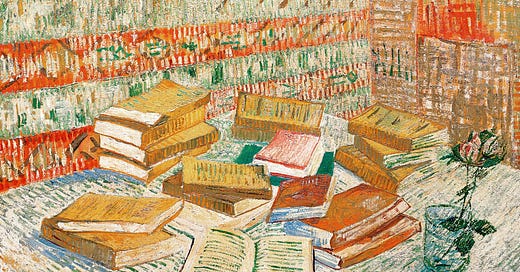



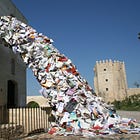

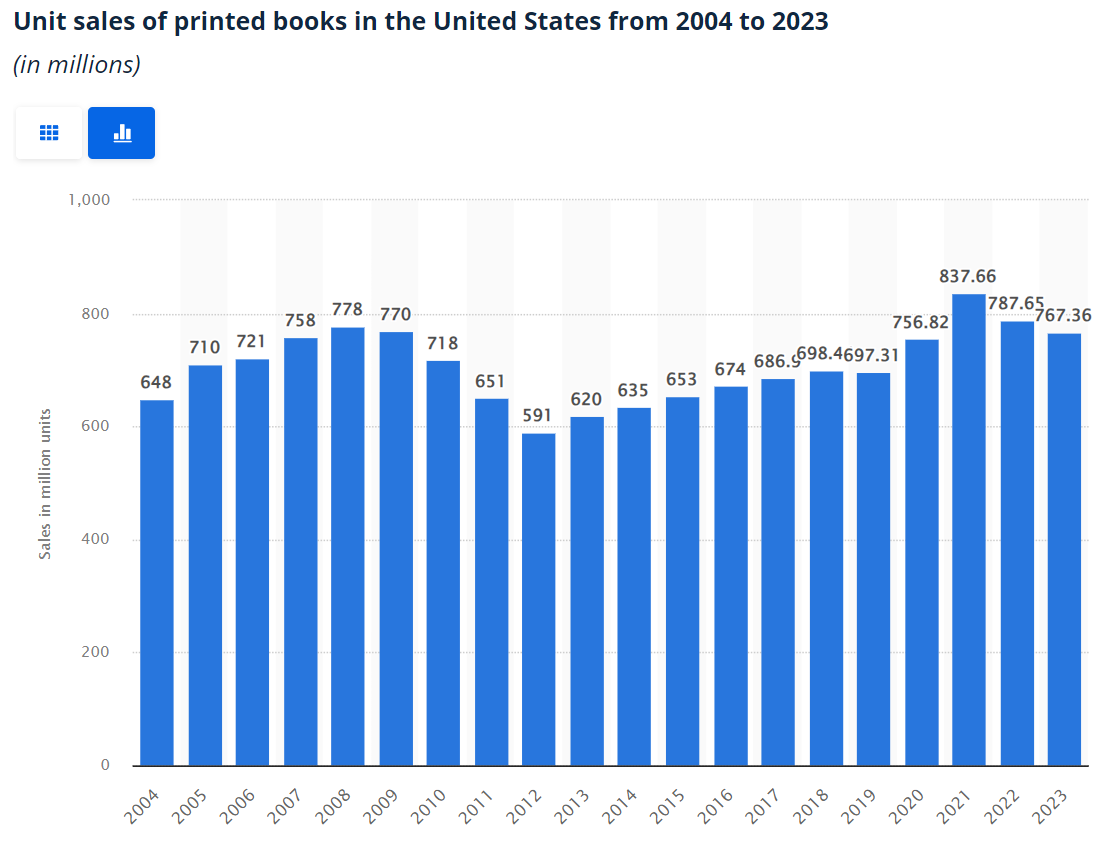
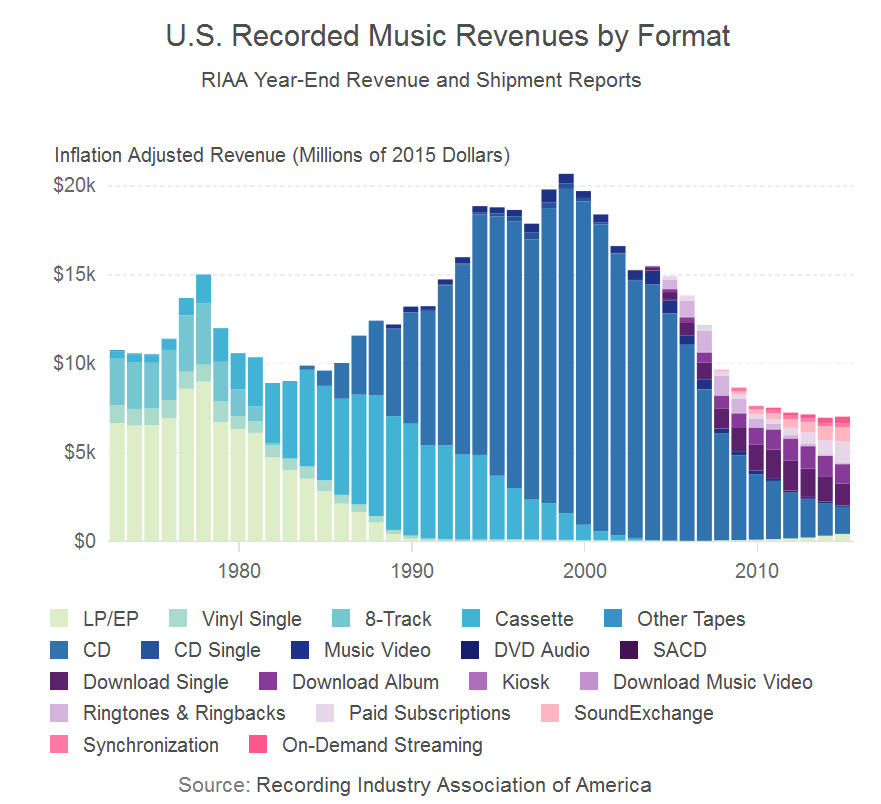
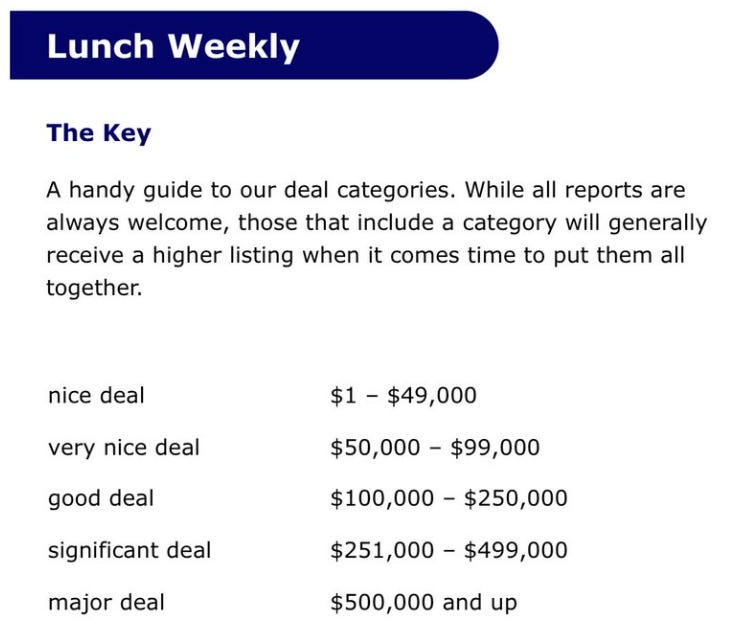
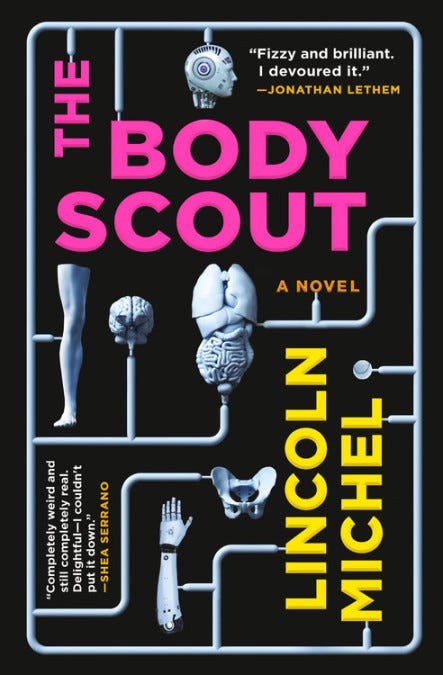
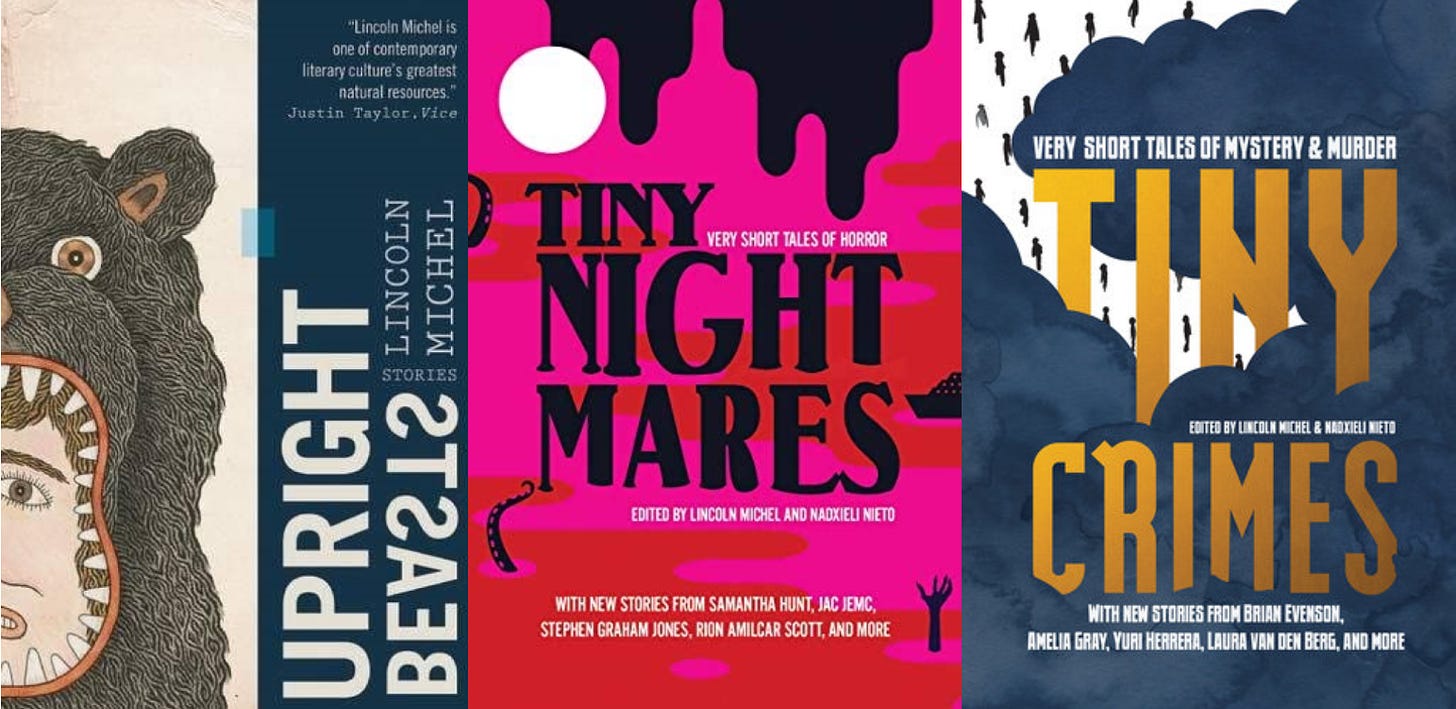
I'm so happy you wrote this counter-piece. I read @kathleenschmidt's great response to that other post and basically agreed with everything she said, and was hoping for a better breakdown of what was so incredibly off about it—and here you are. It presents to us some of pitfalls of Substack, too, which is that everyone is a reporter(!), and there's no fact-checking(!). There was so much missing context, too, like the fact that book publishing is a giant ecosystem with the Big Five, yes, but also indies, and hybrids, and self-published authors. And what did any of it have to do with people not buying books? I'm a hybrid book publisher, and people are not only buying our books; they're buying books that big houses passed on because the Big Five didn't think these titles had a big enough readership. We are not aspiring to sell even 10,000 copies. That would be awesome, but our average sales are more like 1000-4000 per title, and we are still a $1 million dollar publisher. There is much about book publishing that people do not understand. It takes work to get under the hood. The DOJ didn't get it. And that other piece certainly got it wrong. Grateful for your work, Lincoln!
Thanks for this more nuanced analysis. I’ve been in the business of writing since the 1970s so I can remember the good old days of mass market paperbacks. One of my novels sold 340,000 copies in paperback. That would be considered an astonishing number these days. But of course, back then we didn’t have all the other temptations screaming to tablets to smart phones , etc.